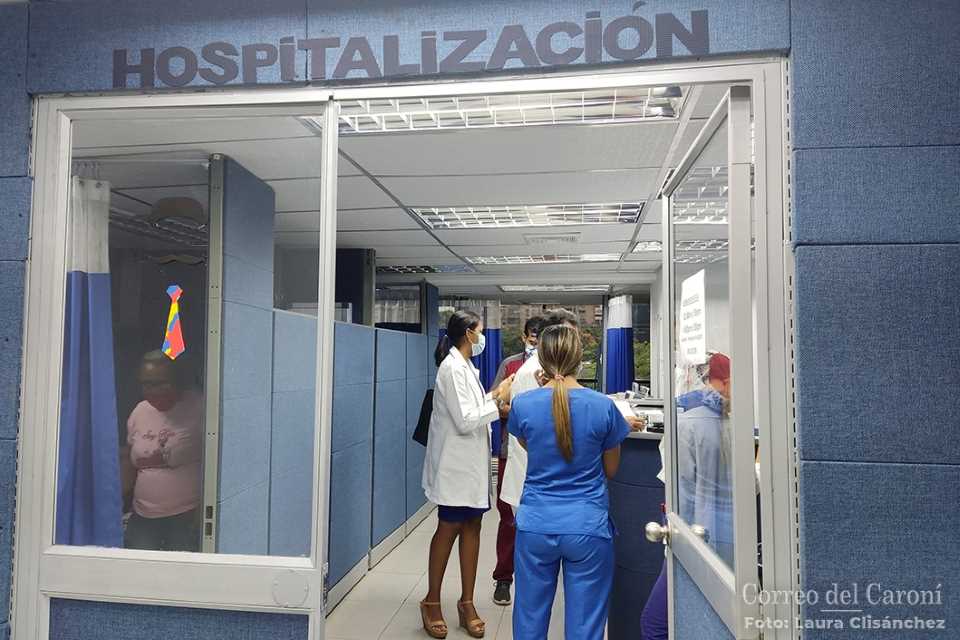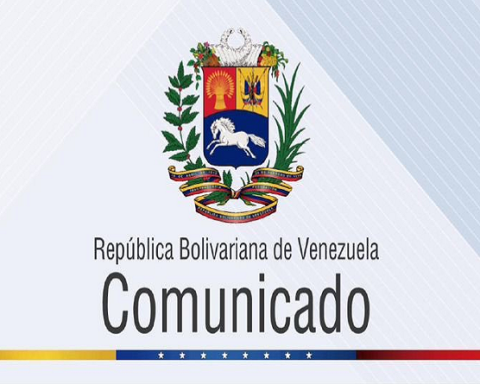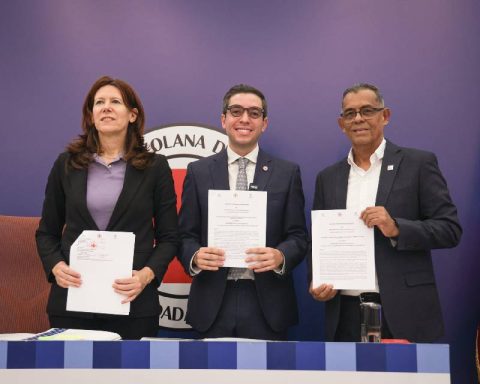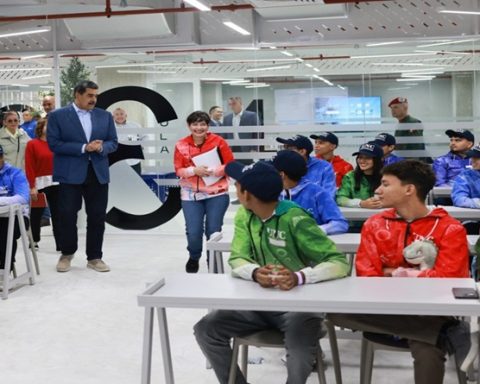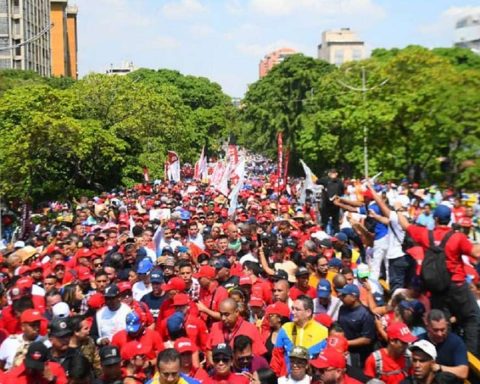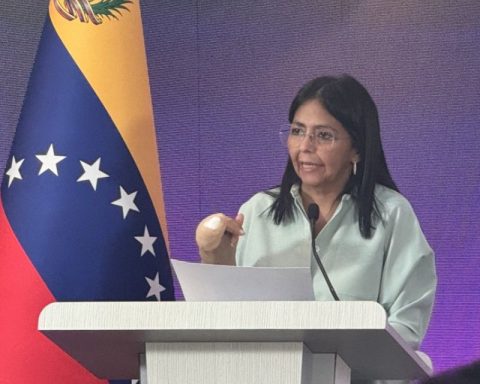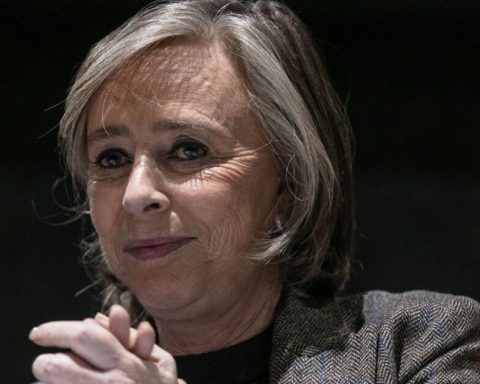The Venezuelan Corporation of Guayana is committed to repowering its hospital network as a substitute for hospitalization, surgery and maternity insurance policies. This leaves most workers and retirees without access to health care and treatment for chronic and occupational diseases.
Text and photos: Laura Clisánchez | Mail of the Caroni
Authorities of the Venezuelan Corporation of Guayana (CVG) propose the repowering of the hospital network of the parent company as an alternative to compensate for the lack of hospitalization, surgery and maternity (HCM) insurance policies suspended for more than five years.
The proposal was questioned by union movements, workers and retirees because the five CVG hospitals have never been enough to guarantee timely medical attention to the more than 200,000 people who make up the holding companyso they ask for the activation of the HCM insurance policy.
Four of these hospitals have been in existence for more than 10 years, and are experiencing serious shortages of supplies, equipment, medicines, and trained personnel. Although sporadically they receive donations of medical supplies and equipment.
The Guayana Workers’ Clinical Hospital (type I), located in the administrative building of the Venezuelan Corporation of Guayana (CVG) is the newest facility, it was inaugurated in June 2021. Since it opened its doors, patients have denounced the collapse in attention and consultations (which must wait for up to four months or more), in addition to the lack of supplies and basic drugs in the emergency area and pharmacy.
In fact, the Federation of Retirees and Pensioners Associations of Bolívar State (Fedajupebol) filed a complaint with the Prosecutor for alleged acts of corruption that directly allude to the president of the CVG, Pedro Maldonado and Marcelo Storino, general manager of Health of CVG.
Also read: In Sidor and Ferrominera to work you have to be silent
They maintain that the new hospital is “a facade of corruption in which money is invested in what it should not.”
While different services are being inaugurated on the campus, it maintains an agreement with four private clinics in the city to do CT scans, some specialized consultations and surgeries: the patient is referred to the clinic and the CVG pays the amount of the medical intervention, but this benefit is accessed by a minority.
Dr. Marcelo Storino admitted in an interview with Mail of the Caroni that the hospital is not enough to respond to all workers and retirees and that the health system is vulnerable.
He argues that when the other areas of the hospital are inaugurated (Emergency, Adult, Pediatric and Neonatal Intensive Care, five operating rooms, Blood Bank and Oncology Unit) they will manage to dispense with the alliance with the private sector and provide a better response.
#Video Inauguration of new areas in the José Gregorio Hernandez Workers’ Clinical Hospital #CVGfor the assistance of workers and their families.@NicolasMaduro@amarcanopsuv@HAbreuMRT @CVG_Official#TikTok https://t.co/mchnRb4Zc5 pic.twitter.com/Sfb95ZP0yM
— SGR-GUAYANA (@sgrguayana) May 25, 2022
“No hospital is made to take on a complete population like that of CVG. Every time we are going to give more and more answers, but a single hospital will never be enough because the resources are also finite », she said.
Such precariousness of resources and services is not attributed to the corruption of the regime, but to the economic sanctions imposed by the United States since 2017, long after the production of basic companies began to decline.
Despite the fact that the aluminum and steel sectors are operating at their minimum capacity after years of disinvestment and opaque administration, Storino believes that current productivity is sufficient to sustain the repowering of CVG’s health services. “In the worst moment of the blockade and cruelty against Venezuela, a hospital was built, that is what is meritorious,” he celebrated.
“HCM unsustainable over time”
Movements of workers and retirees from basic companies have repeatedly protested to demand the reactivation of the HCM insurance policy. During the wait, several employees and retirees have died due to lack of medical care.
On May 1 of last year, Nicolás Maduro mentioned a new collective contracting model —without consulting the pulverized union movement— that would prioritize, among other topics, access to health under an alternative model to the HCM: “Build a health system free and quality public service for the working class».
Also read: After 11 years in prison, Rodney Álvarez seeks to fight for the cause of the workers
Storino points out that HCM is unsustainable, especially in a context of low production. He reported that CVG invested 1.5 million dollars per month, since only 30% of CVG workers and retirees benefited. “The other 70% still had to go to hospitals,” he said.
«Now we don’t wait to finish the hospital to respond, the response is being given as it is being built. If we weren’t here, where would the more than 30,000 patients seen for consultation be today, or the more than 4,000 patients seen monthly for emergencies? Who would take care of them?” she added.
Ramón Bejarano, member of the trade union movement Unity in Coincidencea union group aligned with the Venezuelan opposition, maintains that the HCM is irreplaceable.
“If the person cannot be treated in this area, with the HCM they can go to any part of the national territory, and they have the guarantee that they can be treated,” said Bejarano.
“Our call is to respect what is established in the collective agreements that is based on social and economic studies and aligned with the programs of the International Labor Organization and other international agreements, in addition to the best international worker care systems. », he concluded.
Currently, the workers of the former non-oil alternative industrial emporium have neither HCM insurance policies nor fully equipped hospitals to go to, since neither the CVG care centers nor the Venezuelan Social Security Institute (IVSS) nor the Institute of Public Health (ISP) can respond to the population.
In Ciudad Guayana there are at least three hospitals that the Bolívar state government promised, but never built or rescued.
What happened to the HCM?
HCM policy replacement is not new. As of 2012, a new labor relations scheme was consolidated, already contemplated in Labor Policies and Collective Bargaining, a document of the Ministry of Popular Power for Labor and Social Security, made in 2009, an initiative led by María Cristina Iglesias at the time.
Those were times when the government of Hugo Chávez began to question the “privatization” of labor benefits such as HCM insurance, a prelude to the subsequent annihilation of contractual rights.
In the framework of Socialist Guiana Plan 2009-2019a macro project that sought to install workers’ control in the companies, the Chávez government proposed that the public administration assume labor benefits to lower the cost of collective contracts, since the production of basic companies was plummeting after the corrupt administration of the same State.
The HCM policy became a conquest of the union movement established in the collective contracts negotiated with the State, as a response to the Executive’s inability to provide workers, retirees and their families with an optimal public health system.
In an interview with Mail of the Caroni in 2013, Jesús Urbieta, deceased former director of the National Institute for Trade Union Studies (inaesin) explained that the HCM was negative for Social Security due to the expenses it implied, since, in his opinion, with that money at least five additional hospitals could be built.
The academic recalled that the privatization process of the HCM was born as a consequence of the weakness of the State in the health sector, but later, the precariousness of Venezuelan health was also a consequence of the privatization of that insurance due to the millionaire investment that it implied.
Workers Clinical Hospital Project
According to information provided by Storino, the Workers’ Clinical Hospital has:
- Triage, General Medicine
- Cardiology
- Psychology
- Nutrition – dietetics
- Otorhinolaryngology
- Podiatrist (diabetic foot)
- Gastroenterology (newly opened)
- Ophthalmology
- Pediatrics, Neonatology, Epidemiology
Surgery area (agreement with private clinics):
- General Surgery
- Traumatology
- Gynecology and Obstetrics
- Urology
- Maxillofacial Surgery
- pediatric surgery
- Anesthesiology
- Neurosurgery
- Hospitalization area: 83 beds divided into hospitalization, observation and emergency.
Therapeutic and diagnostic services unit:
- Physical rehabilitation-physiatry and therapy.
- Cardiology unit: coronary care unit (five beds) with equipment for echocardiogram, Doppler ultrasound, stress test, blood pressure and arrhythmia monitors.
- Gastroenterology unit: capacity for two quotas. It has endoscopy and colonoscopy equipment.
- Pharmacy: equipped with medicines for hospitalized or emergency patients. There is availability for some prescribed drugs from specialized consultations.
Marcelo Storino reported that, by the second half of 2022, five operating rooms will be inaugurated, an oncology unit with 12 places, 17 medical offices, an emergency room on the ground floor with two emergency operating rooms and a shock trauma unit, a blood bank , delivery room, retention and intensive therapy for adults, pediatrics and neonatal.
In an oral balance reported that so far they have attended 1,600 patients in consultation per month (just 80 daily on average) and 1,200 laboratory tests are processed daily.
He said that there are 80 daily slots for laboratory tests for patients who are not hospitalized or in an emergency, with the purpose of which patients reported that there were only 30 slots available.
He reported that in agreement with the clinics, 114 surgeries have been performed during the month of April and that, so far this year, more than 10,000 people have received complete treatment for diabetes and hypertension (the only chronic diseases for which there is an answer in this time), through the Multidose Program.
Also read: Poor health in Bolívar exceeds the capacity of the CVG Workers’ Clinical Hospital
Post Views:
68
